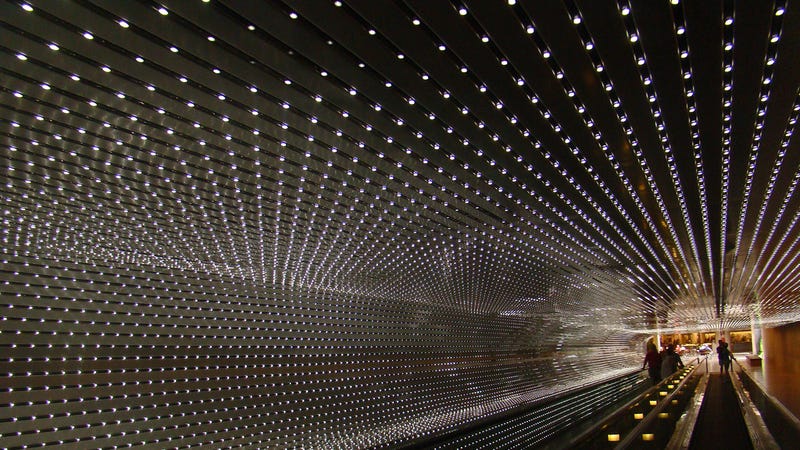Perhaps we’re not alone but instead reside in a multiverse stocked with all sorts of fantastical realms. These other universes are somewhat—but not exactly—like our own. Maybe gravity acts differently, or particles come in different shapes and sizes. Could life still exist in any of these bubbles?
A team of researchers at the University of Michigan asked these questions but took things a step further. They removed one of the four fundamental forces of nature, the weak nuclear force, from their hypothetical universes. And according to their calculations, these altered circumstances wouldn’t rule out life.
“Although somewhat different from our own, such universes remain potentially habitable,” the study’s authors write in the paper accepted for publication by the journal Physical Review D (and dug up by Lisa Grossman for Science News).
Let’s start from the beginning, though. There are four forces you should know about. Stuff bigger than, say, a planet, interacts with other big things mostly via the force of gravity. At the scale we’re most familiar with—humans, forests, coffee mugs—the electromagnetic force is more salient.

That force helps ensure that your laptop doesn't fall through the table. At an even smaller scale than that, the strong nuclear force holds particles inside of atoms together. Then there’s the weak nuclear force, which also occurs within atoms. A kind of radioactive decay known as beta decay is a result of weak nuclear force interactions inside of atoms that can turn neutrons into protons.
Now that you know the forces, remember that we live in a universe with a bunch of universal constants—electrons always have the same rest mass, for example. Researchers don’t know why these constants have such arbitrary values, and some have suggested that there may be many universes in which these values can differ.
But scientists have noticed that while some slight tweaks to these constants would make the entire universe uninhabitable, according to their equations,, other tweaks wouldn’t. Perhaps there are a whole slew of multiverses out there with different values or different standard force strengths. So, in this new study, the physicists removed the weak force as a thought experiment to see what would happen.
The results: well, it sort of depends on a bunch of other factors, like the ratio of neutrons to protons, and the ratio of three-quark particles to light particles, which could both alter how the final weak force-less universe would look.
But if you pick the right ratios such that there’s enough heavy hydrogen, then stars could still burn and galaxies could still form. These stars would burn through a different process, and look redder. Stars could still form heavier “alpha elements” like carbon, oxygen, and others through nuclear reactions. Core collapse supernovae that usually distribute these elements rely on the weak force, so they’d need to be transported by stellar winds, instead. And even though the abundances of elements would be different, life could form—though there are other factors like the ratio of carbon to oxygen that could affect its habitability.
But why do this hypothetical experiment?
“Looking at these questions can tell us something about our own universe,” study author Alex Howe told Gizmodo. The paper ends with a number of physical ideas that the thought experiment could refine.
Scientists are still looking for indirect evidence that a multiverse could exist—so for now, this is mainly a thought experiment. Howe said creating a universe like this could make for some worthwhile science fiction—and it is kind of science fiction already, if you think about it. “But it’s based on the same knowledge of physics in our own Universe.”
[arXiv via Science News]
